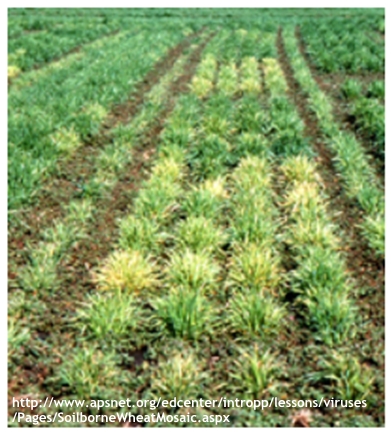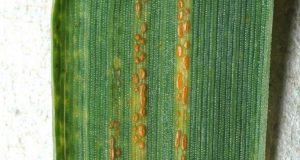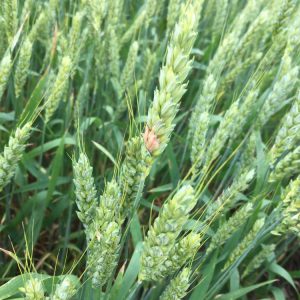Wheat in the southernmost part of Illinois is near Feekes growth stage (FGS) 7, while areas in the mid south are nearing FGS 5. Wheat in the central part of Illinois is greening up. Warm temperatures this week will move our wheat a stage or two, and we should be out in fields scouting. Now is the time you may see some powdery mildew building in some fields. Powdery mildew develops best under cool temperatures and high humidity. Interestingly, this disease does not like it wet- water can actually inhibit spore germination. Powdery mildew typically starts up in low lying pockets in fields and spreads over time. Often the disease slows down once temperatures increase into the 80’s and is not frequently observed in the upper canopy as a result. Resistance is very effective for managing powdery mildew. However, in parts of the U.S., some populations of the powdery mildew pathogen have overcome resistance genes commonly used in wheat varieties. If we start to see this disease more frequently or often, this may be part of the issue. Remember that the powdery mildew that affects wheat is different from powdery mildew that you see on other crops, such as barley, soybeans, or vegetables.
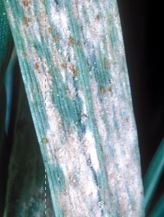
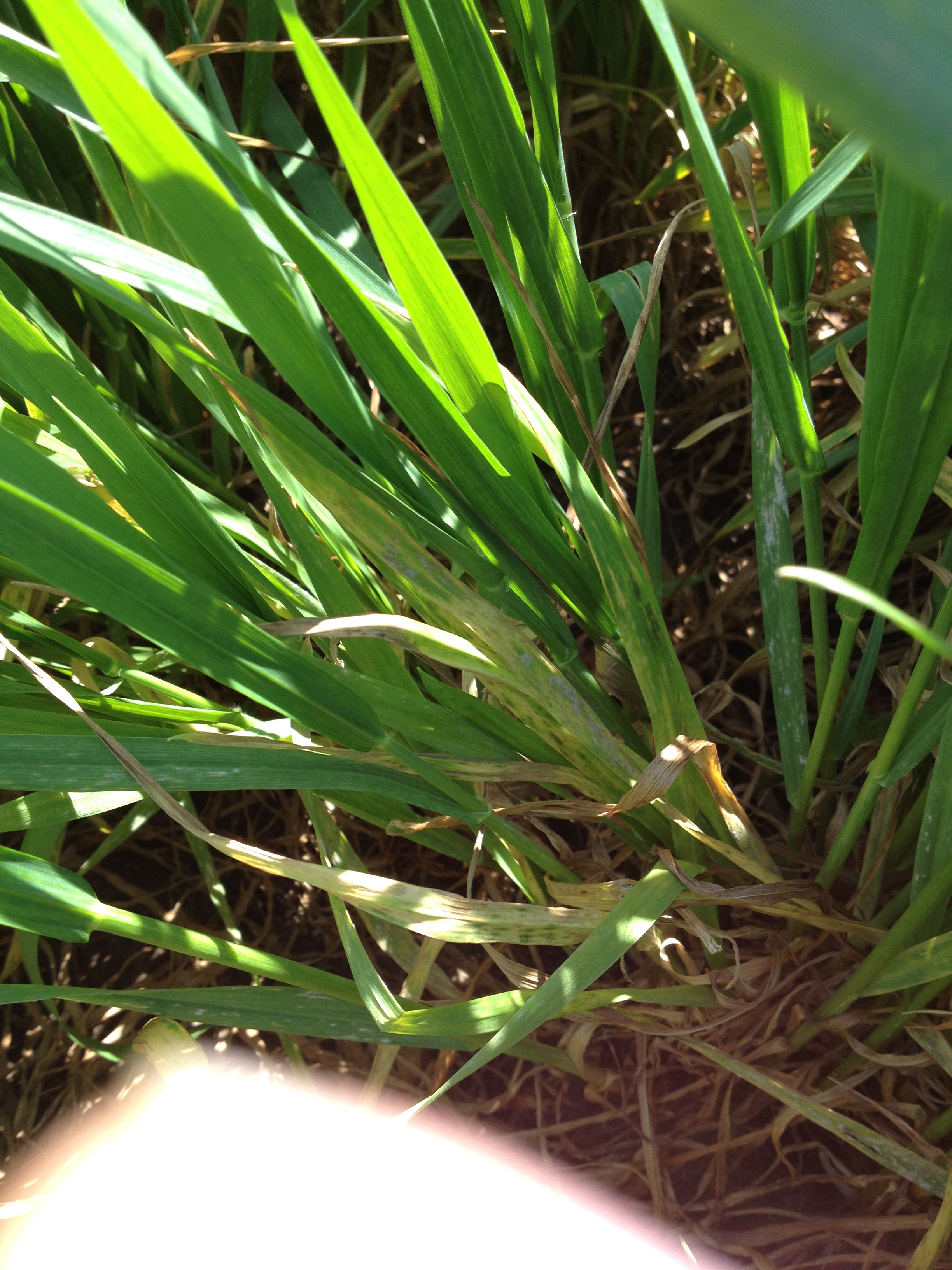
Another fungal disease that you will encounter early in the season is Septoria or speckled leaf blotch. This is a residue-borne fungal disease that produces irregular shaped lesions on foliage. The center of these lesions will have very obvious large black dots, giving it a “speckled” appearance. Like powdery mildew, Septoria leaf blotch does best in cool, humid conditions. Thus, we see it early in the season, and once things warm up, the disease slows down. Most often you will see it in the lower to mid canopy. Unlike Stagonospora leaf blotch, this disease does not move to the head.
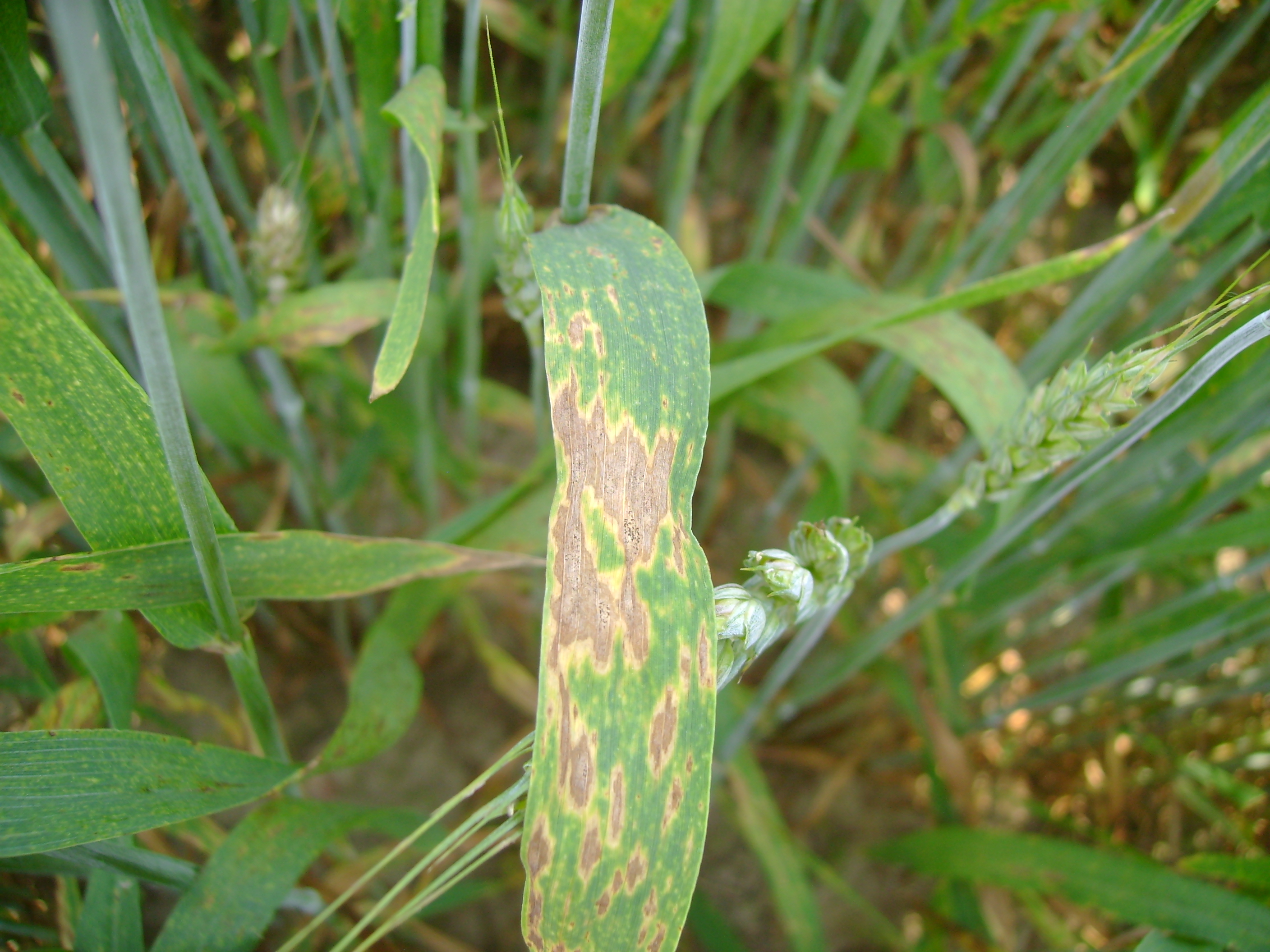
Typically we see symptoms of the soil borne viruses at this point in time, when weather is cool. Examples include wheat spindle streak and wheat soilborne mosaic viruses. These are spread by soilborne protists and do best under cool temperatures, and symptoms often look like nitrogen deficiency. Consequently, when temperatures warm up and nitrogen goes on, symptoms disappear, but the virus may still be present and active. As a result you may see reduced yields but no visual symptoms.
